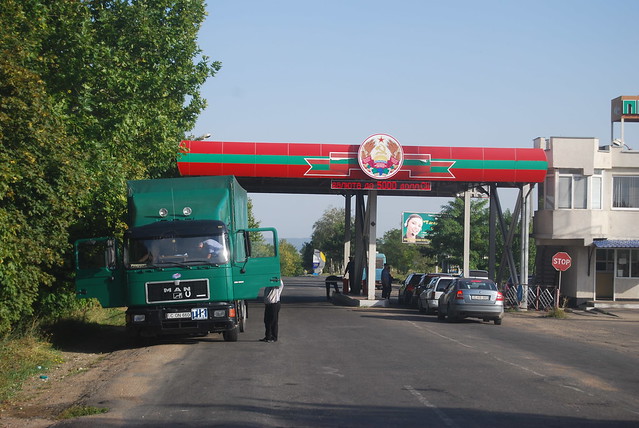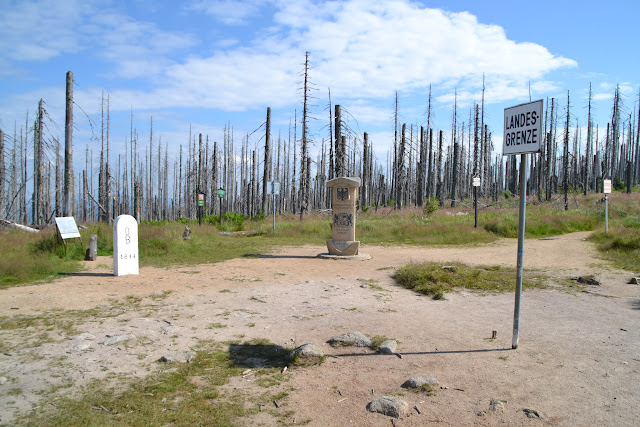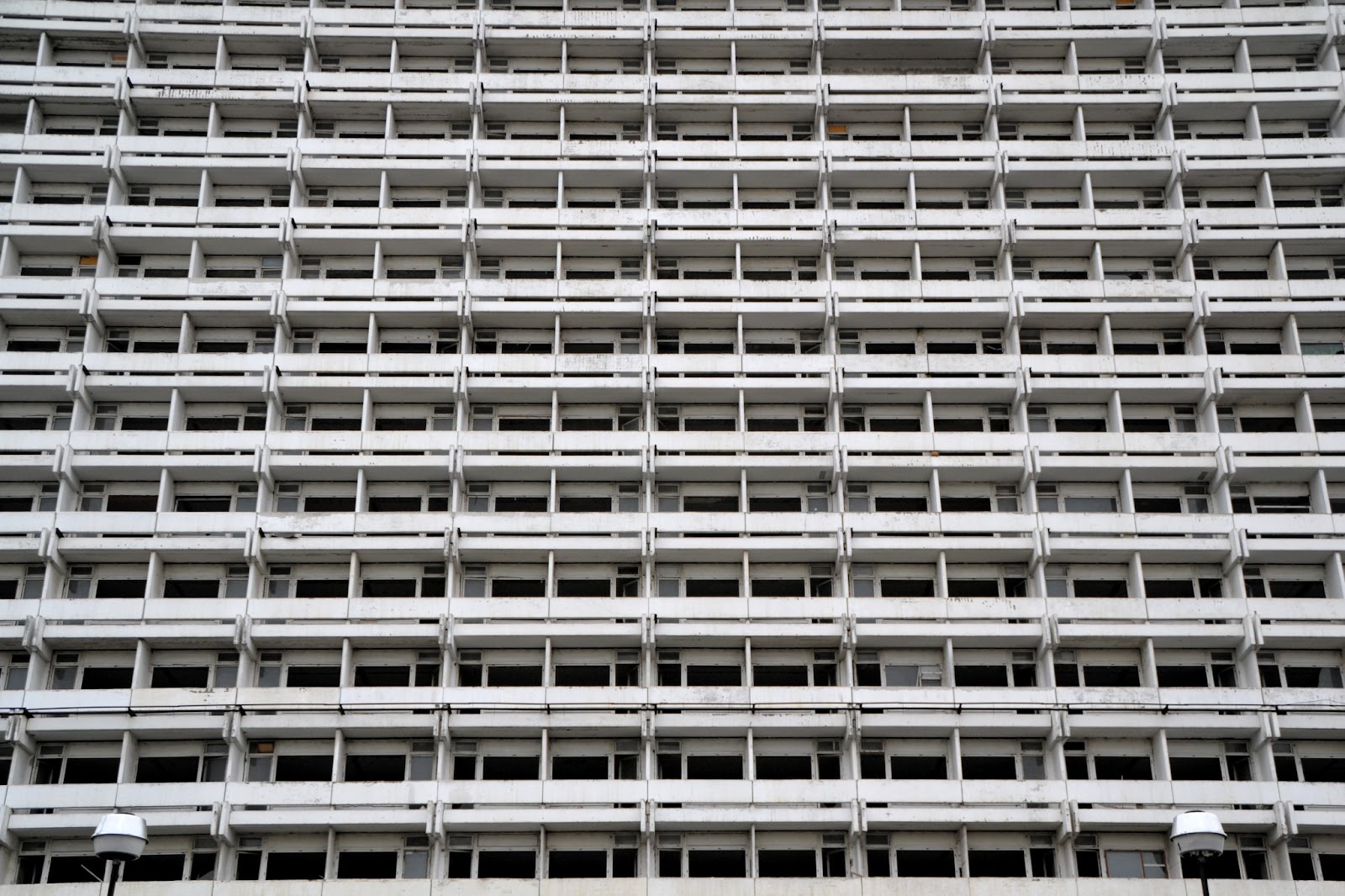During our stay in Chişinău (
see previous post) we took a one-day trip to the
rouge nation of
Transnistria, also called Приднестровская Молдавская Республика or simply Приднестровье [Pridnestrovie]. Often it is abbreviated as ПМР [PMR].
 |
| Border checkpoint of Transnistria: Hammers and sickles. (Source: flickr.com, as I did not dare to make photos at the actual checkpoint myself.) |
Not recognized as a country as such by the United Nations, this area between Moldova and Ukraine is still claimed by Moldova as part of its sovereign territory, but can be regarded as a region which Moldova lost control of. It is recognized by the also non-recoginized countries of
South Ossetia,
Abkhazia and
the republic of Nagorno-Karabakh (yeah, never head about those before either).
Needless to say, you will not find Transnistria on any standard map. It is simply marked as Moldova. Under normal conditions, you can enter the country freely, but as far as I heard, if you want to stay over night, you may have to bribe your way out of the country again.
It is truly a strange country, a weird mix of smuggler state run by an ex-KGB gang with a former Soviet theme omnipresent as socialist realistic artwork.
Here, Soviet Russia has not ceased to exist, but transformed into something much more bizarre, going way beyond the fateful year of 1989. Thus, in Transnistria, they have their own hammer and sickle passports and own hammer and sickle minted currency. And none of this is recognized outside Transnistria, of course.
Our target was the capital city of
Tiraspol. There is a fancy
propaganda promotion video worth watching, and as it is with
propaganda promotion videos it looks like a cheerful place. Titled "I love you, Tiraspol...":
Preparing for the trip, we left all credit cards in our hotel in Chişinău, and just took a limited amount of hard currency with us. I think I merely carried 30 US$ and 20 € along.
Daily bus connections exist form Chişinău bus station to Tiraspol, first task is to find the proper ticket booth, which is different from the others.
 |
| Chişinău bus station. |
Gilbère, my experience travel companion you may recognize from previous posts, has done this trip earlier. After a slight moment of orienting himself, he found the "Casa de Peron", which was nicely build round 2 cut down trees.
 |
| Here you can get bus tickets for Bender and Tiraspol. |
We got two tickets for like 3 or 4 €, very good price for a full day for the commie open-air museum. A very caring and service minded bus stewardess (truly relieved that we spoke a few words of Russian) directed us to the proper bus and handed us the forms which we needed to fill out to enter Transnistria as a foreigner.
Our passports where collected, and Gilbère scored additional bonus points from the bus stewardess for filling out the documents properly in first attempt. Way to go, Gilbère!
 |
| Form for entering Transnistria, front page. |
 |
| Form for entering Transnistria, back page. Note the PMR hammer and sickle stamp to the lower right. |
There was nothing unusual about the documents themselves, but being confronted with a stamp featuring a hammer and sickle in 2014, felt to me as a joke - or a preparation for entering a cold war museum. It should turn out they are not making fun at all.
This is the real thing.
After almost 1 - 2 hours of driving, we arrived at the unofficial border to Transnistria. First we zigzagged without stopping through a Moldovan cordon, and then we reached the Transnistrian checkpoint we had to get off as the only foreigners on the bus.
First was there was a small booth with a passport scan. Our friendly and service minded stewardess presented us to the female officer (all in Russian): "Look at these beautiful two faces, they want to enter. :-D".
We put on our best smiles.
Officer: "Journalist?"
Me: "Niet, Tourist".
Officer: "Camera?"
This was a tricky question. I think I got at least three cameras with me, two of them in the bus, an other in the jacket I carried. So what would be a proper answer here?
Me: "Da."
Officer: "Pokazhite." [ = "show me"]
Bummer, what to do now... I simply just grabbed the small video camera I had in my coat and silently passed it to her. She took it and after a quick inspection: "O.K."
Then we were taken to the second checkpoint, a few meters further down, where we had to turn in our filled out documents, to register for a one-day stay. We politely queued up in the line, until the officer told us that we can skip and come to the desk for immediate processing. Which was cool, felt like the fast-track lane for frequent fliers at the airports. Very friendly.
After a few minutes he handed us back our papers, duly signed and with the latest exit time marked, which was 22:07. Probably this means we can stay there 10 hours, judging from our "check in" time. While handing over our documents he politely wished us "Good luck!", whatever that meant...
After passing a city which was named after the robot from the
Futurama series (
Bender), we arrived at the train station of Tiraspol. Note the funny detail, railway station in Moldovan (or Romanian) is "Gara", and in Russian it's "Voksal", here both are written with Cyrillic letters, i.e. also the Romanian word. I learned that people in Transnistria are forced to use Cyrillic letters, even for the Romanian language.
 |
| Tiraspol railway station. "Gara" written in Cyrillic letters. |
As mentioned before, Transnistria is run by a rouge ex-KGB gang. One part representing this is the local
Sheriff conglomerate, which owns all petrol stations and supermarkets, a mobile network, a Mercedes-Benz dealer, a football club
FC Sheriff Tiraspol, a 200 MUS$ stadium and much more you need to run a country.
As the Sheriff name suggests, here police forces are at work here, upholding the law.
Another major industry and the largest exporter is the
KVINT factory, producing brandy like spirits, in particular Cognacs from the region. Note the funny way they mirrored the V, for a serif font it should be the other way round.
Strolling down the Lenin street, we passed the ministry of justice, again nicely decorated with the Transnistrian hammer and sickle logo.
 |
| Ministry of justice, at the "Uliza Lenina" (Lenin street). |
Gilbère tried again to blend in with his polyethylene bags, quite successfully this time, I'd think. Note also the extremely clean streets, no trash found anywhere! However pavements was not always trolley friendly.
Reaching closer downtown, we passed the embassy of
South Ossetia and
Abkhazia. At this point, Gilbère was getting slightly more nervous, yet I managed to take a few pictures of it. Note in particular the leather jacket guy in the picture below, just in front of the embassies:
.. that guy, stopped us 50 meters earlier, asking us in Russian, what time it is.
Now, think of that, in the age of smart phones and cheap watches, a guy asking us what time it is!
Honestly, this is when I went paranoid, I seriously doubt he was asking for the time, but possibly testing our language skills. My Russian is not good enough to answer him, so I merely lifted my arm exposing my watch, and he thanked and backed off.
Possibly he now thinks we are ultra professionals. This way, we did not expose our nationality by our accent.
We stopped by for lunch at Andy's Pizza, (0.30 € for a vodka shot) which looked very much like any other Pizza place. Reaching closer to the center, the propaganda was more frequent in form of massive LED billboards showing tank processions and marching people along with its Transnistrian version of the red soviet flags (which is the red soviet flag with a green banner added - following the Moldovan SSR).
Close to the parliament we encountered a group of young people, practicing for their national day, by marching in front of what Gilbère thinks was the local house of culture.
 |
| Young citizens marching, preparing for the upcoming national day, presumably. |
We stopped some locals to take a picture of us:
The
Arstotzka T-shirts are absolutely intentional. Gilbère bought them in particular for this place in honor of the computer game "
Papers Please" by
Lucas Pope. Tiraspol is probably one of the last places which still endorses the true Arstotzkan spirit. Glory to Arstotzka!
 |
| Glory to Arstotzka! |
I was slightly hesitant here, the idea of explaining our T-shirts and our posing in front of the parliament to a Transnistrian officer did not comfort me. Gilbère seemed very pleased though.
My ongoing paranoia was fueled even more, when this car stopped. The guy inside clearly watched us and talked into mobile phone for some time, possibly a colleague of the leather jacket guy who didn't know what time it was.
This was the moment, when we though of a discrete escape, and a natural spot would be the local museum just next door. Three very friendly ladies (only Russian speaking) welcomed us, and one gave us a dedicated tour (there where no other visitors) with long explanations (still, all in Russian).
 |
| Слава Арстотцка! |
Later Gilbère pointed out we paid 10-fold tourist price, like 20 rubles instead of 2 (= 1 € instead of 0.1 €). How did they figure out we where not natives? Even Gilbère's polyethylene bag did not make an impression.
Another thing I encounter often during my trips to Russia, is the glorification of local heroes in front of e.g. educational institutions, such as this:
A few more impressions of the Tiraspol:
 |
| The tidy roads of Tiraspol. |
Our trip concluded at the local KVINT booze-shop, with a full exchange booth inside, where you could change your hard currency into local units.
 |
| Exchange bank in a KVINT shop. |
Those local units can then immediately be exchanged into booze. Note all this is an irreversible operation, it is not possible to change the local units back to hard currency.
 |
| Selection of spirits, just next to the currency exchange booth. |
Finally we took our bus back from the train station, and passed by several checkpoints without any issues. At one point at the
Dniester river, we saw a camouflaged Russian guard post, there should be several Russian troops in Transnistria, but we hardly saw any of them.
Things went very smooth, we did not have to leave the bus. Some officer with a big soviet hat (hammer and sickle) simply picked up our slips, and that was it.
No stamp, no signature. There is no proof in our passports that we have been in Transnistria. Sadly.
One week later, due to the escalating conflict Ukraine spilling over to Odessa, we found this notice on
Wikitravel, which generally said that Transnistria was closed for foreigners:
Possibly the border was only closed from the Ukrainian side, but we are not sure. Nonetheless, this is the third time something dramatic happens where ever we go, seems to be pathologic. All planned well in advance, always immediately after booking, something strange happens, like invasion, civil war like conditions, planes shot down, etc. If Gilbère is up to open a travel agency (he surely got talent for making bookings and arranging stuff) he might need more luck here.
Full album here. Enjoy!





























































